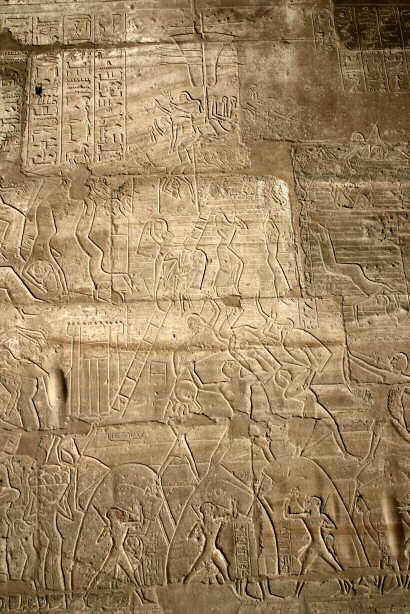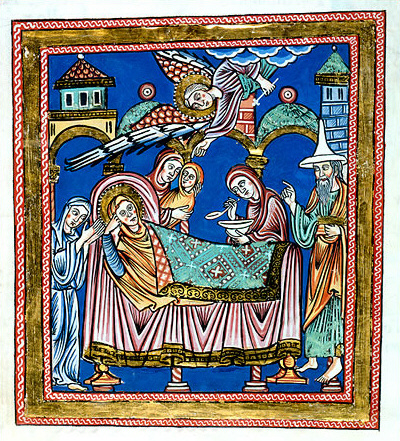|
Battle Of Wolfenbüttel (1641)
The Battle of Wolfenbüttel (29 June 1641) took place near the town of Wolfenbüttel, in what is now Lower Saxony, during the Thirty Years' War. Swedish forces led by Carl Gustaf Wrangel and Hans Christoff von Königsmarck and Bernard of Saxe-Weimar, Bernardines led by Jean-Baptiste Budes, Comte de Guébriant withstood an assault by Imperial forces led by Archduke Leopold Wilhelm of Austria, forcing the Imperials to retreat. Background Wolfenbüttel, occupied by Imperial forces, was a strategically insignificant town, but it held great value to the Swedes' House of Welf, Guelph allies. A Guelph army under Hans Caspar von Klitzing had blockaded the Imperial garrison under Johann von Reuschenberg, Johann Ernst, Baron von Ruischenberg since the previous autumn, but its 7,000 troops had been too small a force to reduce the town. Facing growing uncertainty in the wake of the death of General Johan Banér and mutinous troops following a year of inaction and failure, the Swedes needed ... [...More Info...] [...Related Items...] OR: [Wikipedia] [Google] [Baidu] |
Thirty Years' War
The Thirty Years' War, fought primarily in Central Europe between 1618 and 1648, was one of the most destructive conflicts in History of Europe, European history. An estimated 4.5 to 8 million soldiers and civilians died from battle, famine, or disease, while parts of Germany reported population declines of over 50%. Related conflicts include the Eighty Years' War, the War of the Mantuan Succession, the Franco-Spanish War (1635–1659), Franco-Spanish War, the Torstenson War, the Dutch-Portuguese War, and the Portuguese Restoration War. The war had its origins in the 16th-century Reformation, which led to religious conflict within the Holy Roman Empire. The 1555 Peace of Augsburg attempted to resolve this by dividing the Empire into Catholic and Lutheran states, but the settlement was destabilised by the subsequent expansion of Protestantism beyond these boundaries. Combined with differences over the limits of imperial authority, religion was thus an important factor in star ... [...More Info...] [...Related Items...] OR: [Wikipedia] [Google] [Baidu] |
Johan Banér
Johan Banér (23 June 1596 – 10 May 1641) was a Swedish field marshal in the Thirty Years' War. Early life Johan Banér was born at Djursholm Castle in Uppland. As a four-year-old he was forced to witness the execution of his father, the Privy Councillour Gustaf Banér, and uncle, Sten Axelsson Banér (also a Privy Councillour), at the Linköping Bloodbath in 1600, due to accusations of high treason by King Charles IX because of their support of King Sigismund. Though it was the father of King Gustavus Adolphus who had Banér's father executed, the two men developed a strong friendship from an early age, mostly due to Gustavus Adolphus reinstating the Banér family shortly after his coronation. Military career Banér joined the Swedish Army in 1615, and distinguished himself during the Swedish Siege of Pskov. He served with distinction in wars against Russia and Poland, and had reached the rank of colonel by the age of 25. In 1630, Gustavus Adolphus landed in Germ ... [...More Info...] [...Related Items...] OR: [Wikipedia] [Google] [Baidu] |
Battles Of The Thirty Years' War Involving France
A battle is an occurrence of combat in warfare between opposing military units of any number or size. A war usually consists of multiple battles. In general, a battle is a military engagement that is well defined in duration, area, and force commitment. An engagement with only limited commitment between the forces and without decisive results is sometimes called a skirmish. The word "battle" can also be used infrequently to refer to an entire operational campaign, although this usage greatly diverges from its conventional or customary meaning. Generally, the word "battle" is used for such campaigns if referring to a protracted combat encounter in which either one or both of the combatants had the same methods, resources, and strategic objectives throughout the encounter. Some prominent examples of this would be the Battle of the Atlantic, Battle of Britain, and the Battle of France, all in World War II. Wars and military campaigns are guided by military strategy, whereas batt ... [...More Info...] [...Related Items...] OR: [Wikipedia] [Google] [Baidu] |
Sieges Involving The Holy Roman Empire
A siege () . is a military blockade of a city, or fortress, with the intent of conquering by attrition, or by well-prepared assault. Siege warfare (also called siegecrafts or poliorcetics) is a form of constant, low-intensity conflict characterized by one party holding a strong, static, defensive position. Consequently, an opportunity for negotiation between combatants is common, as proximity and fluctuating advantage can encourage diplomacy. A siege occurs when an attacker encounters a city or fortress that cannot be easily taken by a quick assault, and which refuses to surrender (military), surrender. Sieges involve surrounding the target to block provision of supplies and reinforcement or escape of troops (a tactic known as "investment (military), investment"). This is typically coupled with attempts to reduce the fortifications by means of siege engines, artillery bombardment, mining (military), mining (also known as sapping), or the use of deception or treachery to bypass ... [...More Info...] [...Related Items...] OR: [Wikipedia] [Google] [Baidu] |
Military History Of Lower Saxony
A military, also known collectively as armed forces, is a heavily Weapon, armed, highly organized force primarily intended for warfare. Militaries are typically authorized and maintained by a sovereign state, with their members identifiable by a distinct military uniform. They may consist of one or more military branches such as an army, navy, air force, space force, marines, or coast guard. The main task of a military is usually defined as defence of their state and its interests against external armed threats. In broad usage, the terms "armed forces" and "military" are often synonymous, although in technical usage a distinction is sometimes made in which a country's armed forces may include other paramilitary forces such as armed police. Beyond warfare, the military may be employed in additional sanctioned and non-sanctioned functions within the state, including internal security threats, crowd control, promotion of political agendas, emergency services and reconstructi ... [...More Info...] [...Related Items...] OR: [Wikipedia] [Google] [Baidu] |
1641 In The Holy Roman Empire
Events January–March * January 4 – The stratovolcano Mount Parker in the Philippines has a major eruption. * January 14 – The Battle of Malacca concludes with the Dutch East India Company ending Portuguese control of Malacca. * January 18 – The Junta de Braços (council of Estates) of the Principality of Catalonia, led by Pau Claris, accepts the proposal to establish the Catalan Republic under French protection. * February 16 – King Charles I of England gives his assent to the Triennial Act, reluctantly committing himself to parliamentary sessions of at least fifty days, every three years. * March 7 – King Charles I of England decrees that all Roman Catholic priests must leave England by April 7 or face being arrested and treated as traitors. * March 22 – The trial for high treason begins for Thomas Wentworth, 1st Earl of Strafford, director of England's Council of the North. * March 27 **The Battle of Pressnitz begins betwee ... [...More Info...] [...Related Items...] OR: [Wikipedia] [Google] [Baidu] |
Conflicts In 1641
Conflict may refer to: Social sciences * Conflict (process), the general pattern of groups dealing with disparate ideas * Conflict continuum from cooperation (low intensity), to contest, to higher intensity (violence and war) * Conflict of interest, involvement in multiple interests which could possibly corrupt the motivation or decision-making * Cultural conflict, a type of conflict that occurs when different cultural values and beliefs clash * Ethnic conflict, a conflict between two or more contending ethnic groups * Group conflict, conflict between groups * Intragroup conflict, conflict within groups * Organizational conflict, discord caused by opposition of needs, values, and interests between people working together * Role conflict, incompatible demands placed upon a person such that compliance with both would be difficult * Social conflict, the struggle for agency or power in something * Work–family conflict, incompatible demands between the work and family roles of ... [...More Info...] [...Related Items...] OR: [Wikipedia] [Google] [Baidu] |
Sieges Of The Thirty Years' War
A siege () . is a military blockade of a city, or fortress, with the intent of conquering by attrition, or by well-prepared assault. Siege warfare (also called siegecrafts or poliorcetics) is a form of constant, low-intensity conflict characterized by one party holding a strong, static, defensive position. Consequently, an opportunity for negotiation between combatants is common, as proximity and fluctuating advantage can encourage diplomacy. A siege occurs when an attacker encounters a city or fortress that cannot be easily taken by a quick assault, and which refuses to surrender (military), surrender. Sieges involve surrounding the target to block provision of supplies and reinforcement or escape of troops (a tactic known as "investment (military), investment"). This is typically coupled with attempts to reduce the fortifications by means of siege engines, artillery bombardment, mining (military), mining (also known as sapping), or the use of deception or treachery to bypass ... [...More Info...] [...Related Items...] OR: [Wikipedia] [Google] [Baidu] |
Blue Brigade (military Unit)
The Blue Regiment or the Blue Brigade was an infantry regiment in the service of Gustav II Adolph during his campaigns in Germany in the Thirty Years' War. A large portion of the regiment was made up of German mercenaries, who were a common phenomenon on both sides. The regiment's name is derived from the blue colored uniforms worn by the soldiers. The regiment was raised around 1624 during the Polish–Swedish War of 1621–25, originally recruited from Swedish provinces. Following the landing of Gustavus Adolphus and his army in Pomerania, new recruits came from local German inhabitants to fill the ranks. From 1630 onward, the Blue regiment took part in almost every battle of the Swedish intervention in the Thirty Years' War, such as the battle of Breitenfeld (1631), Lützen (1632) and Nördlingen (1634). Battle of Lützen in particular, where it is referred to as the "Old Blue" regiment, though this name was official from 1634 only, was disastrous to the regiment as it lost ... [...More Info...] [...Related Items...] OR: [Wikipedia] [Google] [Baidu] |
Joachim Christian Von Wahl
Joachim was, according to Sacred tradition, the husband of Saint Anne, the father of Mary (mother of Jesus), and the maternal grandfather of Jesus. The story of Joachim and Anne first appears in the Gospel of James, part of the New Testament apocrypha. His feast day is 26 July, a date shared with Saint Anne. In Catholic tradition The story of Joachim, his wife Anne (or Anna), and the miraculous birth of their child Mary, the mother of Jesus, was told for the first time in the 2nd-century apocryphal infancy-gospel the Gospel of James (also called the ''Protoevangelium of James''). Joachim was a rich and pious man, who regularly gave to the poor; however, Charles Souvay, writing in the ''Catholic Encyclopedia'', says that the idea that Joachim possessed large herds and flocks is doubtful. At the temple, Joachim's sacrifice was rejected, as the couple's childlessness was interpreted as a sign of divine displeasure. Joachim consequently withdrew to the desert, where he fasted and did ... [...More Info...] [...Related Items...] OR: [Wikipedia] [Google] [Baidu] |




